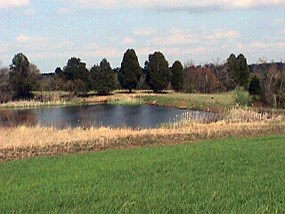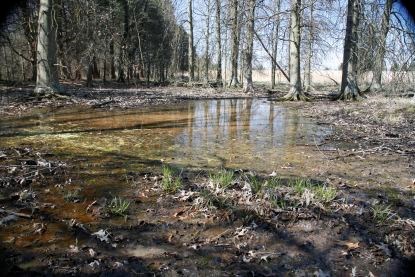
NPS Photo Wetlands are vitally important habitat for a wide variety of plants and animals in the park. Some trees can survive in areas that are wetter, and outcompete other trees. Some amphibians depend on seasonal pools of water to raise their young.

NPS Vernal PoolsAmong the most interesting wetlands are vernal pools. Vernal pools are shallow depressions that retain water only during certain times of the year. These small, isolated wetlands usually fill with water in the spring when snow melts and rainfall accumulates before being soaked up by thirsty tree roots or draining into the Chesapeake Bay Watershed. ReferencesLoomis, D.T. and K.E. Heffernan. 2003. Classification and Mapping of Wetlands at Manassas National Battlefield Park, Virginia: Brawner Farm and Matthews Hill Tracts. Natural Heritage Technical Report 03-21. Virginia Department of Conservation and Recreation, Division of Natural Heritage, Richmond, VA. Unpublished report submitted to the National Park Service. 8 pp. |
Last updated: November 21, 2022
